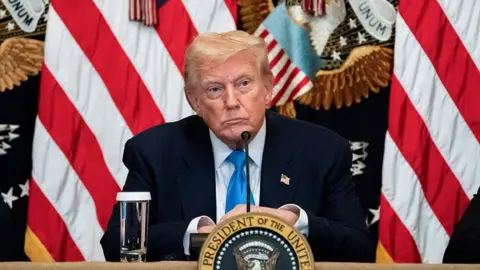US President Donald Trump’s recent imposition of tariffs on imports from over 90 countries marks a significant shift in American trade policy. Effective immediately, these tariffs demand that companies importing foreign goods into the United States pay substantial taxes to the government. Industry experts caution that these unexpected costs may ultimately be passed on to consumers, leading to increased prices for goods across various sectors.
One of the most striking outcomes of this tariff implementation is its disproportionate impact on certain countries. Brazil has been hit particularly hard, facing a staggering 50% tariff on most goods. India is also set to experience this same 50% rate, set to take effect on August 27. These high tariffs represent a new chapter in America’s foreign trade relations, especially for large economies engaging in significant exports to the U.S.
While negotiations appear ongoing, with Washington and Beijing postponing further tariffs until August 12, Mexico has managed to gain temporary immunity from impending tariff escalation. In a recent statement, President Trump noted that Mexico will be allowed to maintain its current tariff rates for an additional 90 days, alleviating fears of a proposed increase to 35%. Conversely, Canada has already been subjected to a 35% tariff, which has been active since the previous Friday, although it is important to note that many Canadian goods are exempted under the US-Mexico-Canada Trade Agreement.
The new tariffs are not merely a bureaucratic change; they have far-reaching implications for the U.S. economy and its trading partners alike. The complete list outlining the tariffs imposed by country is a critical resource for understanding the extent of these changes, especially for those nations whose goods occupy a significant share of U.S. imports. The compilation of these tariffs emphasizes a key element of Trump’s trade agenda—bringing manufacturing and sourcing back to the United States by increasing the cost of foreign goods.
In broader discussions surrounding these tariffs, two notable aspects arise. Firstly, while the tariffs may provide short-term relief to certain domestic industries burdened by foreign competition, they may also impose long-term challenges. For instance, consumers may find themselves facing higher prices for everyday products due to the increased costs incurred by companies for importing goods. This scenario invites scrutiny and debate regarding the effectiveness of such protectionist measures.
Secondly, the strategic negotiation aspect of Trump’s tariffs cannot be overlooked. It remains to be seen whether these tariffs serve merely as a prelude to further discussions or if they are a definitive, long-term policy shift. The temporized approach with Mexico indicates a willingness to negotiate and reassess before enforcing more aggressive trade measures.
As a visual component highlighting the significance of this news, the article includes an image of President Trump seated at his desk in the White House, an image emblematic of the authority and decision-making associated with presidential policymaking. This serves to reinforce the weight of the decision to impose such a sweeping set of tariffs.
In conclusion, the implementation of Trump’s tariffs on imports embodies a pivotal moment in U.S. trade policy that will undoubtedly reverberate throughout the global marketplace. The reaction from affected importing nations, the responses of consumers, and the potential ripple effects on the U.S. economy remain crucial aspects to observe in the unfolding narrative surrounding Trump’s ambitious trade agenda. As developments continue, particularly concerning ongoing negotiations and potential adjustments, stakeholders far and wide will be monitoring the consequences of these tariffs and their implications in the broader context of global trade relations.











